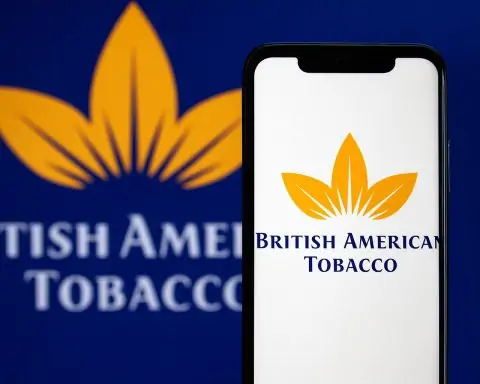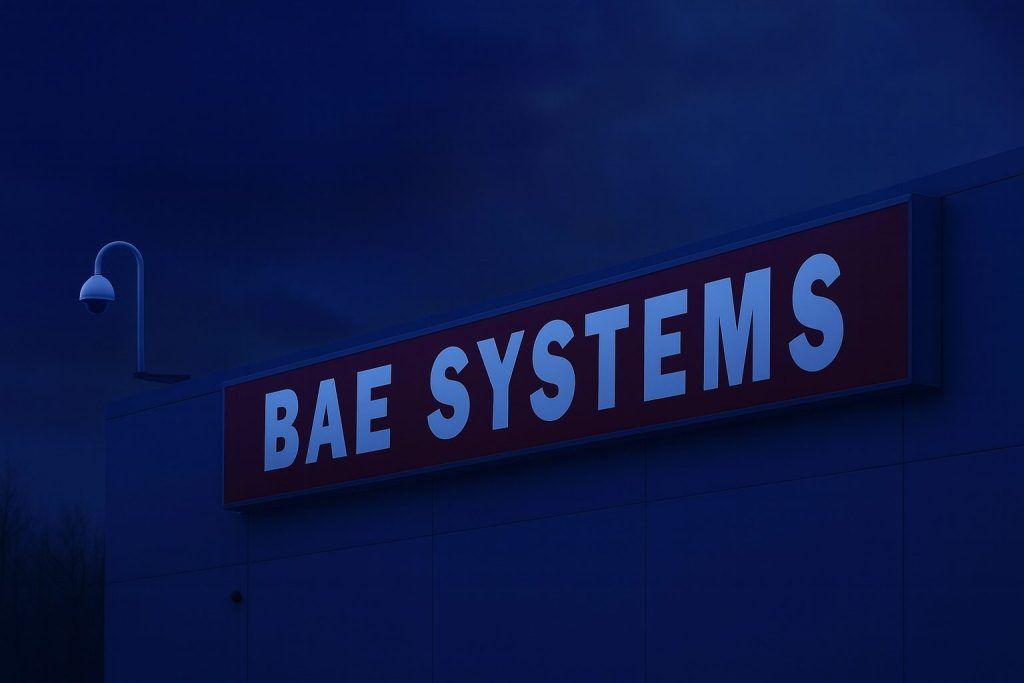LONDON — HSBC Holdings Plc (LON: HSBA) traded slightly higher on Friday, 28 November 2025, with the share price hovering close to its 52‑week high as investors weighed fresh headlines on the proposed privatisation of Hang Seng Bank, speculation over the bank’s next chair, a growing digital‑assets strategy and new lending milestones in the UK SME market.
HSBC share price today: HSBA trades close to 52‑week high
As of Friday morning in London, HSBC shares were trading around 1,067–1,068p, modestly above Thursday’s close of 1,065p. [1]
That leaves the stock only about 5% below its 52‑week high of 1,126.20p, set earlier this month on 13 November, and roughly 53% above its 52‑week low of 698.70p from April. [2]
Key valuation markers in today’s trading:
- Market capitalisation: roughly £182 billion. [3]
- Trailing P/E ratio: about 14.9x earnings. [4]
- Annualised dividend yield: around 4.5–4.7%, based on an annual dividend of roughly 48p per share and a share price near current levels. [5]
HSBC’s American Depositary Receipts on the NYSE (ticker: HSBC) last closed around $70.6 on 26 November, continuing a steady advance through November. [6]
Key HSBC stock headlines on 28 November 2025
A cluster of fresh stories on Friday is helping shape the narrative around HSBC’s stock. Here are the main developments dated 28 November 2025 that equity investors are watching.
1. Technical momentum: HSBC crosses its 200‑day moving average
MarketBeat highlighted that HSBC’s London‑listed shares recently traded above their 200‑day moving average, a technical sign often read as confirmation of an uptrend. [7]
- The 200‑day moving average sits near 962p, while the stock traded as high as 1,066.2p during the move.
- The report notes a “Hold” consensus from six analysts (two Buy, four Hold), with an average price target around 1,037.5p, although some houses – such as Citigroup – have targets as high as 1,240p. [8]
For a bank stock that spent much of 2024 trading far below book value, that technical breakout aligns with a fundamental story of improving profitability and rising rates, tempered by litigation and China‑related risks.
2. Institutional buying: American Century increases HSBC stake
A separate MarketBeat note reports that American Century Companies Inc. lifted its HSBC holdings by 11.9% in the second quarter, adding over 120,000 shares to take its stake to about 1.14 million shares, valued at roughly $69.5 million at the time of the filing. [9]
The same piece recaps HSBC’s recent quarterly dividend of $0.50 per ADR (annualised $2.00) and characterises the analyst view on the ADRs as a “Moderate Buy” with an average target near $63 (note that many of these targets pre‑date the latest rally). [10]
While 13F‑style disclosures are backward‑looking, they reinforce the picture of large global asset managers treating HSBC as a core developed‑market bank exposure rather than a distressed restructuring story.
3. Capital markets flow: post‑stabilisation notices on TT Varlık and Unilever bonds
HSBC’s investment‑banking arm was also in the regulatory news flow on Friday via two post‑stabilisation notices:
- TT Varlık Kiralama A.Ş. (Türk Telekom) – HSBC Bank plc confirmed that no stabilisation activity was undertaken in connection with US$600 million of 6.5% notes due 2030, issued by TT Varlık and guaranteed by Türk Telekom. [11]
- Unilever Capital Corporation – a similar notice stated that no stabilisation took place for €850 million 2.875% notes due 2032 and €800 million 3.5% notes due 2037, both guaranteed by Unilever PLC and Unilever United States, Inc. [12]
These filings are routine under UK listing rules: they tell the market that the bank, acting as stabilising manager, did not intervene in secondary trading to support the bond price. For HSBC shareholders, they underline the bank’s continued role in high‑grade primary markets rather than signalling a shift in risk profile.
4. SME push: HSBC UK doubles broker‑led lending past £500m
In the UK, HSBC UK announced that it has surpassed £500 million of lending to SMEs via commercial brokers in 2025, more than doubling the figure for 2024.
Key details from the Financial Reporter piece:
- The bank has expanded its intermediary business with additional business development managers and underwriters to service broker demand.
- New specialist roles target agriculture, healthcare and mid‑corporate lending, alongside products tailored for intermediaries and SME clients.
This push matters for equity holders because SME and mid‑market lending is one area where UK banks can still grow volumes and fees without taking excessive balance‑sheet risk, especially when paired with tight underwriting and sector specialisation.
5. Digital finance: HSBC to launch tokenized deposits for corporates
A widely shared article on DisruptionBanking argues that “HSBC & JPMorgan just killed boring stablecoins”, highlighting a global shift toward tokenized bank deposits. [13]
In that piece, DisruptionBanking notes that:
- HSBC Holdings Plc plans to start offering tokenized deposits to corporate clients in the US and UAE in the first half of 2026, as part of a broader banking‑on‑blockchain push. [14]
- Tokenized deposits are described as on‑chain representations of regulated bank deposits, potentially offering yield and deposit insurance protections while behaving like programmable digital money. [15]
For HSBC’s stock story, this isn’t about near‑term earnings; it’s about the bank signalling that it wants to be on the “regulated, scalable” side of the crypto‑infrastructure divide rather than chasing speculative stablecoin business.
6. Governance spotlight: George Osborne touted as potential HSBC chair
Governance is back in focus as reports suggest former UK chancellor George Osborne is a leading contender to become HSBC’s next chair.
The Times notes that Osborne, who once championed a “golden era” with China, is being seriously considered for the role, though critics highlight his limited direct banking experience and raise questions about political optics given heightened scrutiny of China links. [16]
The same coverage describes the selection process as messy and politically sensitive, reflecting HSBC’s position at the intersection of UK, Hong Kong and mainland Chinese regulatory regimes. Any confirmed appointment could influence how investors perceive HSBC’s risk tolerance, especially around China strategy and regulatory diplomacy.
7. India franchise: HSBC InvestDirect profit jumps over 20%
In India, HSBC InvestDirect Financial Services India reported a 21.2% year‑on‑year rise in standalone net profit to ₹11.83 crore for the quarter ended September 2025, despite a roughly 3.8% dip in sales to ₹47.34 crore.
While the entity is small in group terms, the result underscores HSBC’s push into higher‑margin wealth, brokerage and investment services in faster‑growing markets.
8. Credit view: Morningstar DBRS publishes new rating report
Morningstar DBRS released a new credit rating report on HSBC Holdings Plc dated 28 November 2025. The public summary simply flags publication of the report, without advertising any change to headline ratings, suggesting a re‑assessment and update rather than a ratings shock.
Stable or reaffirmed ratings help keep HSBC’s funding costs low as it issues term debt and capital securities, and they complement the bank’s own narrative of maintaining a strong capital base while absorbing litigation and China‑related credit costs.
Hang Seng Bank privatisation remains the central strategic catalyst
Although most of the formal announcements landed on 27 November, the market is still trading on the implications of HSBC’s plan to buy out minority shareholders in Hang Seng Bank Limited.
Recent disclosures and media coverage show that:
- HSBC’s Asia‑Pacific arm has obtained regulatory approvals and consents under Hong Kong’s Takeovers Code, giving it flexibility to trade in Hang Seng shares and derivatives without breaching deal rules. [17]
- A monthly update filed to the London market confirms that the takeover is proceeding via a scheme of arrangement, with a Scheme Document expected to be despatched on or before 17 December 2025, following a Hong Kong High Court hearing to convene shareholder meetings. [18]
- The offer price is HK$155 per Hang Seng share, representing roughly a 33% premium to the undisturbed 30‑day average prior to the 9 October announcement and exceeding Hang Seng’s highest share price in more than three years. [19]
Reuters previously reported that the deal is worth around $13.6 billion and that HSBC has paused further share buybacks to preserve capital for the transaction, even after completing a $3 billion share repurchase earlier in the year.
For HSBC equity investors, the privatisation is a double‑edged sword: it promises full control over a strategically important Hong Kong franchise and its dividend stream, but it also concentrates capital and China/Hong Kong exposure at a time of ongoing property‑market and geopolitical risk.
Earnings backdrop: Q3 2025 results, dividend and legal overhang
All of today’s headlines sit on top of an earnings story that is still dominated by legal provisions and China‑related credit charges, even as core income trends remain solid.
From HSBC’s 3Q 2025 earnings release and subsequent coverage:
- Reported profit before tax came in at $7.3 billion, about $1.2 billion lower than 3Q 2024, largely due to $1.4 billion in legal provisions, including a major charge tied to litigation connected with the Bernard Madoff Ponzi scheme.
- Excluding “notable items”, pretax profit rose around 3% in constant currency to $9.1 billion, supported by higher net interest income and strong wealth management performance.
- Management raised 2025 net interest income guidance to about $43 billion or more, reflecting slower‑than‑expected rate cuts in core markets like the UK and Hong Kong.
- The board approved a third interim dividend of $0.10 per share for 2025, with ex‑dividend date 6 November and payment due 18 December 2025. [20]
On capital returns, HSBC’s investor‑relations site confirms a $3 billion buyback completed on 24 October and provides updated analyst consensus estimates dated 14 November 2025, alongside a buyback update file from 27 October. [21]
In short: the bank is still generating hefty underlying profits and paying out a mid‑single‑digit dividend yield, but legal and restructuring costs – plus the Hang Seng transaction – are shaping how much surplus capital actually reaches shareholders in the near term.
What today’s newsflow means for the HSBC share‑price narrative
Putting all of this together, the 28 November 2025 newsflow reinforces a few big themes around HSBC’s stock:
- Momentum with caveats
- Trading just 5% below its 52‑week high and well above its 200‑day moving average, HSBC is firmly in “re‑rated incumbent” territory rather than turnaround purgatory. [22]
- At ~15x trailing earnings and a 4.5–4.7% yield, the shares are no longer obviously cheap, but investors are still being paid a solid income to wait for the Hang Seng and litigation stories to play out. [23]
- Strategic concentration on Asia and digital
- The Hang Seng Bank deal, tokenized deposits initiative and ongoing focus on Hong Kong and mainland China make clear that HSBC intends to double down on its “Asia‑centric global bank” identity. [24]
- That brings growth potential – especially in wealth and transaction banking – but also ties HSBC’s fortunes tightly to China’s economic and regulatory climate.
- Governance and risk optics matter more than usual
- The prospect of George Osborne as chair, combined with high‑profile Madoff litigation and Hong Kong sensitivities, means that investors are scrutinising who steers the ship almost as much as the numbers themselves. [25]
- Operational grind looks solid under the headlines
- UK SME lending growth, stronger India profits and institutional buying support the narrative that HSBC’s core franchises are performing reasonably well despite the legal noise. [26]
Nothing in today’s updates fundamentally rewrites the HSBC equity story, but they do sharpen its contours: a high‑dividend, Asia‑tilted universal bank near the top of its recent trading range, balancing capital‑intensive strategic moves with a desire to keep rewarding shareholders.
For anyone following HSBA or the HSBC ADRs, the next big checkpoints after today’s steady session will be: formal despatch of the Hang Seng scheme document, any confirmation of the new chair appointment, and the full‑year 2025 results and capital framework early next year.
References
1. www.investing.com, 2. markets.ft.com, 3. markets.ft.com, 4. markets.ft.com, 5. markets.ft.com, 6. www.marketwatch.com, 7. www.marketbeat.com, 8. www.marketbeat.com, 9. www.marketbeat.com, 10. www.marketbeat.com, 11. www.investegate.co.uk, 12. www.tradingview.com, 13. www.disruptionbanking.com, 14. www.disruptionbanking.com, 15. www.disruptionbanking.com, 16. www.thetimes.com, 17. ng.investing.com, 18. www.investegate.co.uk, 19. www.hsbc.com, 20. www.hsbc.com, 21. www.hsbc.com, 22. markets.ft.com, 23. markets.ft.com, 24. www.hsbc.com, 25. www.thetimes.com, 26. www.marketbeat.com









